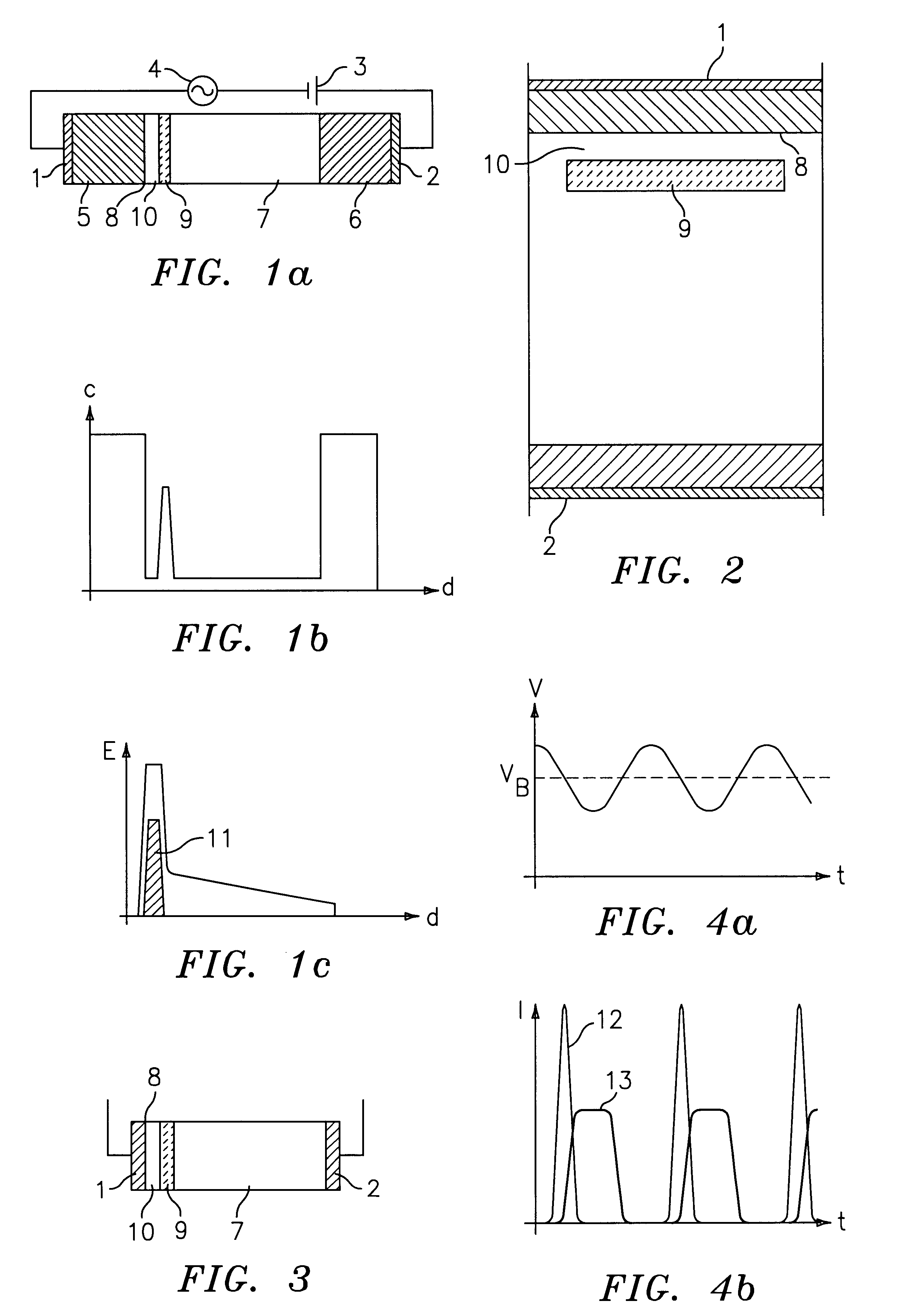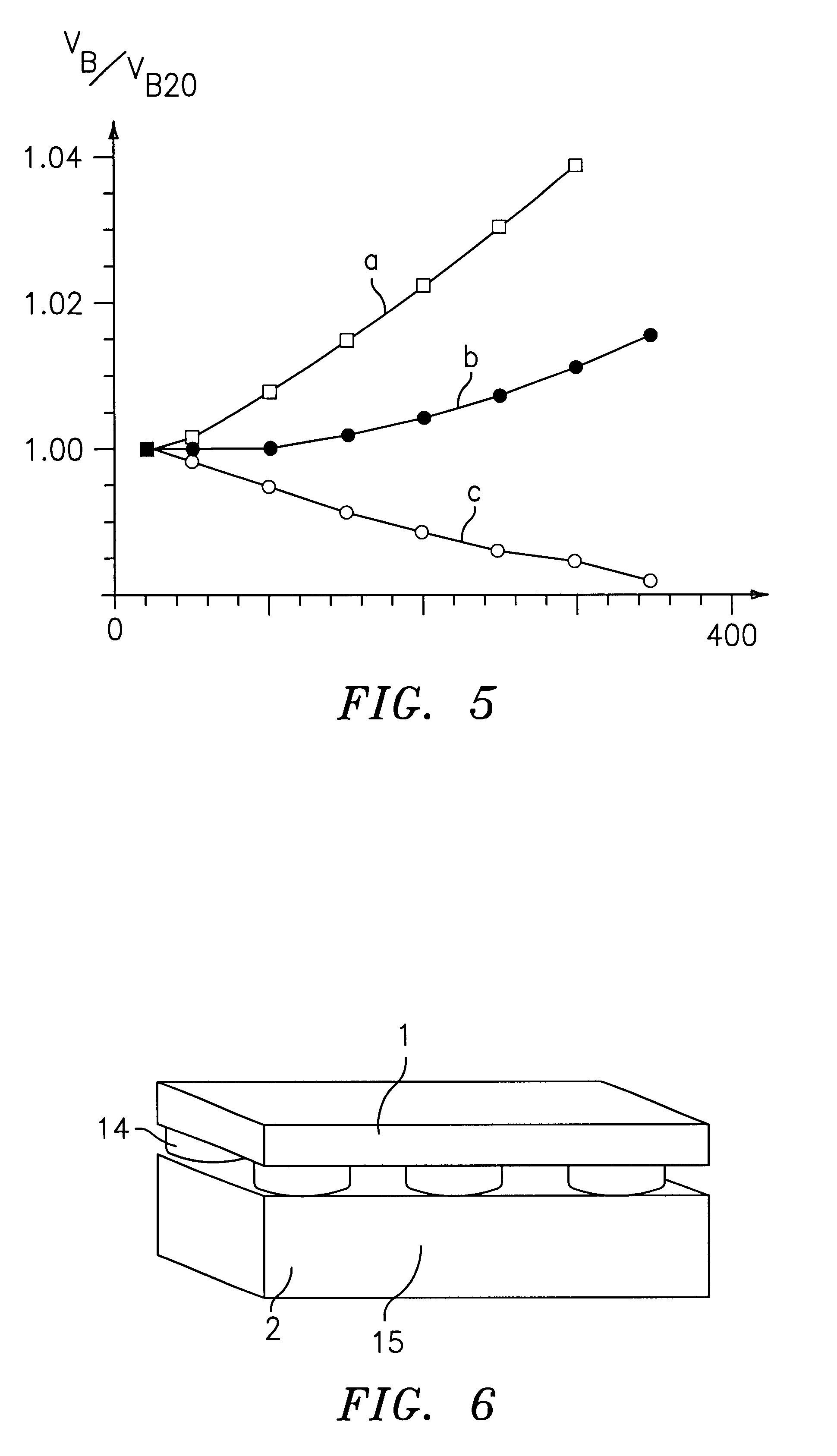High power impatt diode
- Summary
- Abstract
- Description
- Claims
- Application Information
AI Technical Summary
Benefits of technology
Problems solved by technology
Method used
Image
Examples
Embodiment Construction
FIG. 1 illustrates a high power IMPATT (Impact Ionisation Avalanche Transit Time) diode for generation of power signals with a frequency above 30 GHz. This diode has two electrodes, namely a cathode 1 and an anode 2, adapted to be connected to a direct voltage source 3 and positioned in a microwave cavity 4 designed so as to have the resonance at desired microwave frequency. A semiconductor layer of crystalline SiC is arranged between the two electrodes and has a highly doped p-type layer 5 in contact with the metal cathode 1, a highly doped n-type layer 6 in contact with the metal anode 2, and a low doped n-type drift layer 7 interconnecting the layers 5 and 6. The layers 5 and 7 forms a pn-junction 8, which is reverse biased by the direct voltage of the direct voltage source 3. Furthermore, a thin n-type layer 9 with a substantially higher doping concentration than the drift layer is arranged in the drift layer 7 at a short distance from the highly doped p-type layer 5. The thin l...
PUM
 Login to view more
Login to view more Abstract
Description
Claims
Application Information
 Login to view more
Login to view more - R&D Engineer
- R&D Manager
- IP Professional
- Industry Leading Data Capabilities
- Powerful AI technology
- Patent DNA Extraction
Browse by: Latest US Patents, China's latest patents, Technical Efficacy Thesaurus, Application Domain, Technology Topic.
© 2024 PatSnap. All rights reserved.Legal|Privacy policy|Modern Slavery Act Transparency Statement|Sitemap



